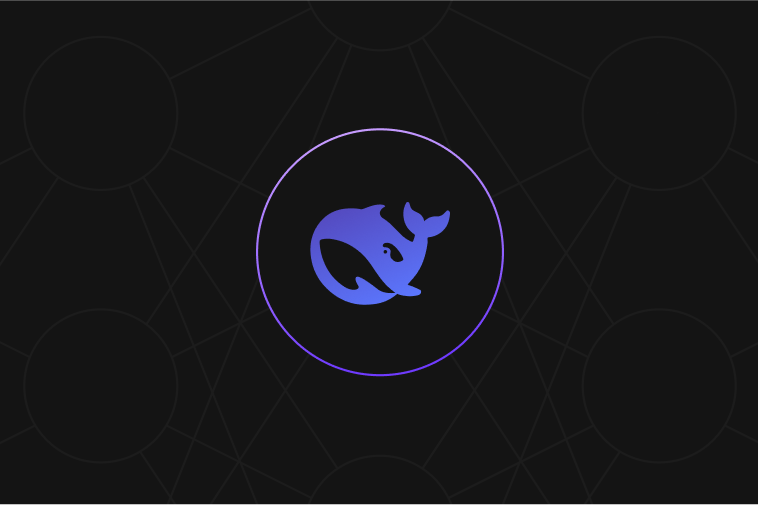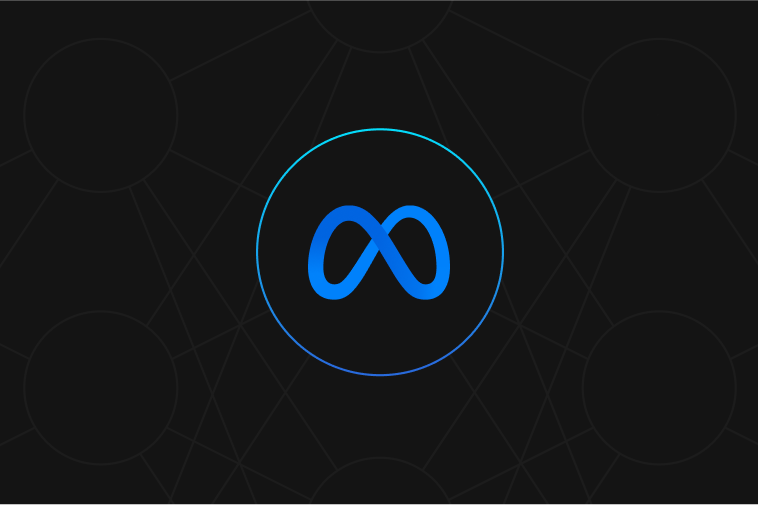API USAGE
API IDENTIFIER
osmosis-ai/osmosis-structure-0.6b/fp-32import OpenAI from "openai";
const openai = new OpenAI({
baseURL: "https://api.inference.net/v1",
apiKey: process.env.INFERENCE_API_KEY,
});
const completion = await openai.chat.completions.create({
model: "osmosis-ai/osmosis-structure-0.6b/fp-32",
messages: [
{
role: "user",
content: "What is the meaning of life?"
}
],
stream: true,
});
for await (const chunk of completion) {
process.stdout.write(chunk.choices[0]?.delta.content as string);
}PLAYGROUND
Total Cost = $0.00
Time To First Token
0ms
Tokens Per Second
0
Total Tokens
0
Total Cost = $0.00
Time To First Token
0ms
Tokens Per Second
0
Total Tokens
0
Type a message to get started
Tweak the overall style and tone of the conversation.
Control how creative you'd like the model to be when responding to you.
Set the maximum token length of generated text.
RELATED MODELS

DeepSeek R1
DeepSeek-R1 is an open-source first-generation reasoning model leveraging large-scale reinforcement learning to achieve state-of-the-art performance in math, code, and reasoning tasks, and includes distilled models suitable for various applications.
TRY IT

DeepSeek V3 0324
DeepSeek-V3-0324 is an advanced language model with improved reasoning capabilities, enhanced web development support, superior Chinese writing proficiency, and refined function calling accuracy, designed to provide detailed search analysis and high-quality interactive experiences.
TRY IT

Llama 3.3 70B Instruct
Meta's Llama 3.3 is a 70B parameter multilingual instruction-tuned language model designed for dialogue use, outperforming many open and closed-source models and incorporating safety features such as supervised fine-tuning and reinforcement learning with human feedback.
TRY IT
Osmosis-Structure-0.6B: Small Language Model for Structured Outputs
Osmosis-Structure-0.6B is a specialized small language model (SLM) designed to excel at structured output generation. Despite its compact 0.6B parameter size, this model demonstrates remarkable performance on extracting structured information when paired with supported frameworks.
Our approach leverages structured output during training, forcing our model to only focus on the value for each key declared by the inference engine, which significantly improves the accuracy of the model's ability to produce well-formatted, structured responses across various domains, particularly in mathematical reasoning and problem-solving tasks.

Results
We evaluate the effectiveness of osmosis-enhanced structured generation on challenging mathematical reasoning benchmarks. The following results demonstrate the dramatic performance improvements achieved through structured outputs with osmosis enhancement across different model families - the same technique that powers Osmosis-Structure-0.6B.
Math DAPO 17K Dataset
| Model | Structured Output | Structured w/ Osmosis | Performance Gain |
|---|---|---|---|
| Claude 4 Sonnet | 15.52% | 69.40% | +347% |
| Claude 4 Opus | 15.28% | 69.91% | +357% |
| GPT-4.1 | 10.53% | 70.03% | +565% |
| OpenAI o3 | 91.14% | 94.05% | +2.9% |
Table 1: Performance on Math DAPO 17K.
AIME 1983-2024 Dataset
| Model | Structured Output | Structured w/ Osmosis | Performance Gain |
|---|---|---|---|
| Claude 4 Sonnet | 16.29% | 62.59% | +284% |
| Claude 4 Opus | 22.94% | 65.06% | +184% |
| GPT-4.1 | 2.79% | 39.66% | +1322% |
| OpenAI o3 | 92.05% | 93.24% | +1.3% |
Table 2: Performance on AIME 1983-2024.
Key Insight: These results demonstrate that by allowing models to think freely and leverage test time compute, we are able to increase performance and still maintain the structured guarantee after the fact with a SLM.
Osmosis-Structure-0.6Bis specifically designed and optimized to maximize these benefits in a compact 0.6B parameter model.
Model Training
Osmosis-Structure-0.6B is built on top of Qwen3-0.6B. We first established a baseline format using 10 samples of randomly generated text and their JSON interpretations. We then applied reinforcement learning to approximately 500,000 examples of JSON-to-natural language pairs, consisting of either reasoning traces with their final outputs, or natural language reports with their expected structured formats.
We used verl as the framework to train our model and SGLang as the rollout backend. To enable structured training, we modified parts of the verl codebase to allow for per sample schema to be passed into the training data.
Usage
SGLang
We recommend an engine like SGLang to be used to serve the model, to serve, run the following:
python3 -m sglang.launch_server --model-path Osmosis/Osmosis-Structure-0.6B --host 0.0.0.0 --api-key osmosis
And to use the endpoint:
import json
from openai import OpenAI
api_key = "osmosis"
api_base_url = "http://0.0.0.0:30000/v1"
client = OpenAI(
api_key=api_key,
base_url=api_base_url,
)
# Schema for extracting structured output from reasoning traces
json_schema = json.dumps(
{
"type": "object",
"properties": {
"answer": {"type": "string"}
},
"required": ["answer"]
}
)
# You can also dump pydantic models to json schema as well
# Example reasoning trace input
reasoning_trace = """
Problem: Solve for x in the equation 2x + 5 = 13
Let me work through this step by step:
First, I need to isolate the term with x. I'll subtract 5 from both sides:
2x + 5 - 5 = 13 - 5
2x = 8
Next, I'll divide both sides by 2 to solve for x:
2x ÷ 2 = 8 ÷ 2
x = 4
Let me verify this answer by substituting back into the original equation:
2(4) + 5 = 8 + 5 = 13 ✓
Ok, which means I got the correct answer, and I'm confident about my answer.
"""
response = client.chat.completions.create(
model="Osmosis/Osmosis-Structure-0.6B",
messages=[
{
"role": "system",
"content": f"You are a helpful assistant that understands and translates text to JSON format according to the following schema. {json_schema}"
},
{
"role": "user",
"content": reasoning_trace,
},
],
temperature=0,
max_tokens=512,
response_format={
"type": "json_schema",
"json_schema": {"name": "reasoning_extraction", "schema": json.loads(json_schema)},
},
)
print(json.dumps(response.choices[0].message.content, indent=2))
Ollama
You can also use Ollama as an inference provider on local machines, here is a sample code of the setup:
from ollama import chat
from pydantic import BaseModel
class Answer(BaseModel):
answer: int
reasoning_trace = """
Problem: Solve for x in the equation 2x + 5 = 13
Let me work through this step by step:
First, I need to isolate the term with x. I'll subtract 5 from both sides:
2x + 5 - 5 = 13 - 5
2x = 8
Next, I'll divide both sides by 2 to solve for x:
2x ÷ 2 = 8 ÷ 2
x = 4
Let me verify this answer by substituting back into the original equation:
2(4) + 5 = 8 + 5 = 13 ✓
Ok, which means I got the correct answer, and I'm confident about my answer.
"""
response = chat(
messages=[
{
"role": "system",
"content": f"You are a helpful assistant that understands and translates text to JSON format according to the following schema. {Answer.model_json_schema()}"
},
{
'role': 'user',
'content': reasoning_trace,
}
],
model='Osmosis/Osmosis-Structure-0.6B',
format=Answer.model_json_schema(),
)
answer = Answer.model_validate_json(response.message.content)
print(answer)
